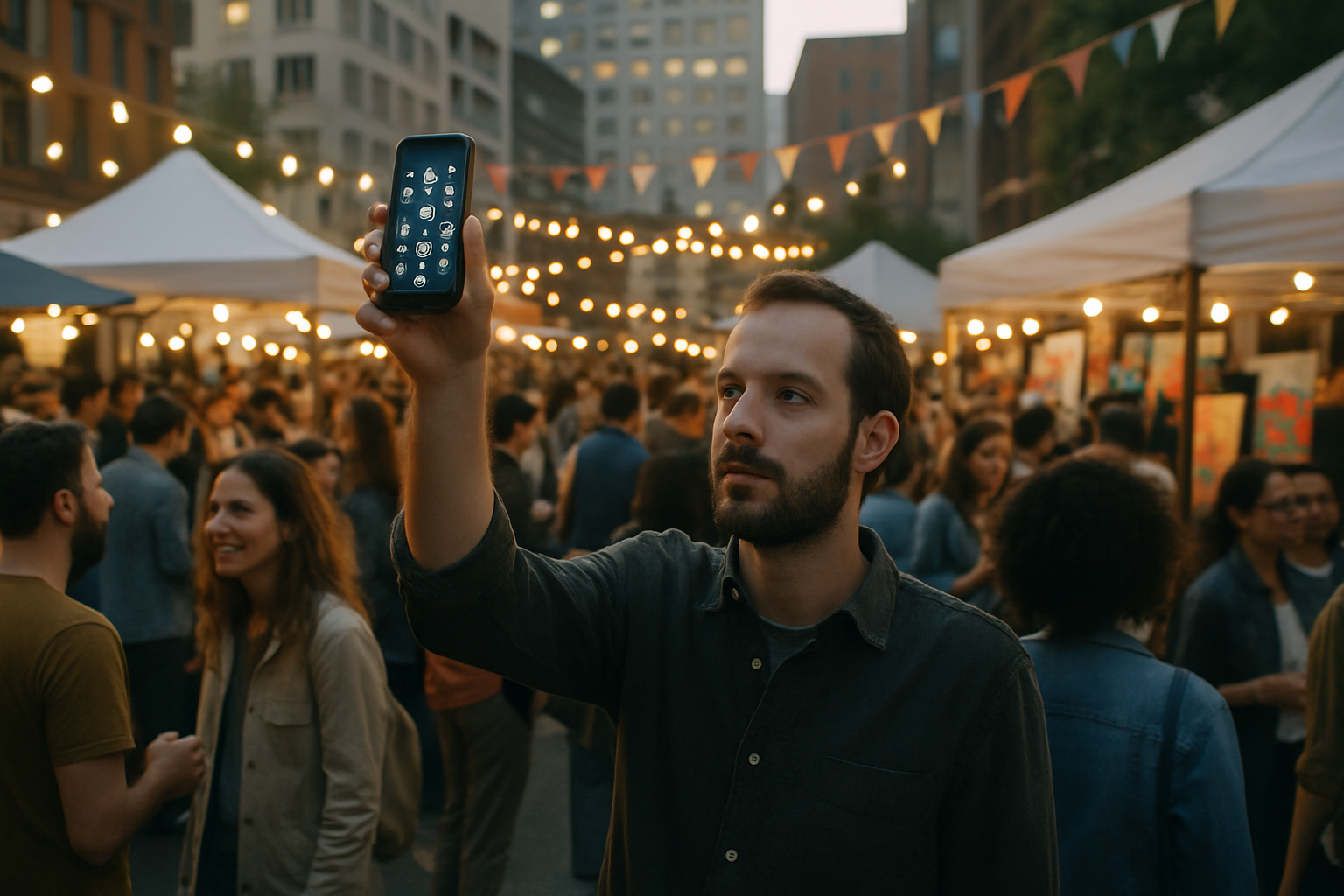Ephemeral Communities: The Rise of Pop-Up Social Spaces
In an era of digital connectivity, a curious countertrend is emerging: ephemeral communities. These temporary, physical gatherings are reshaping how we interact, form bonds, and experience shared moments. From pop-up restaurants to flash mobs, these fleeting social spaces are captivating urban dwellers and redefining community engagement. Read below to explore the fascinating world of ephemeral communities and their impact on modern society.

The Genesis of Ephemeral Communities
The concept of temporary gatherings is not new. Throughout history, humans have come together for festivals, markets, and seasonal celebrations. However, the modern iteration of ephemeral communities has its roots in the early 2000s with the rise of flash mobs. These sudden, seemingly spontaneous gatherings of people performing synchronized actions in public spaces captured the public imagination and laid the groundwork for more complex temporary social structures.
As social media platforms gained prominence, they provided the perfect tools for organizing and promoting these fleeting events. The ability to quickly disseminate information to a large audience made it possible for organizers to create buzz and attract participants with minimal lead time. This intersection of technology and real-world interaction became the catalyst for the ephemeral community movement.
The Psychology of Temporary Togetherness
The appeal of ephemeral communities lies in their unique psychological impact. These temporary spaces create a sense of urgency and exclusivity that taps into our fear of missing out (FOMO). The limited-time nature of these events heightens the perceived value of the experience, making participation feel more special and memorable.
Moreover, ephemeral communities often bring together like-minded individuals who might not otherwise meet. This shared interest or purpose creates an instant bond among participants, fostering a sense of belonging and community, albeit a temporary one. The transient nature of these gatherings also allows individuals to experiment with different identities and social roles without long-term commitment, providing a safe space for self-expression and exploration.
Forms and Functions of Modern Ephemeral Communities
Ephemeral communities manifest in various forms, each serving different social needs and desires:
-
Pop-up restaurants and supper clubs offer unique culinary experiences in unexpected locations, challenging traditional dining norms.
-
Temporary art installations and galleries transform public spaces into interactive exhibits, democratizing access to art and culture.
-
Short-term coworking spaces cater to digital nomads and freelancers, fostering collaboration and networking opportunities.
-
Guerrilla gardening projects create temporary green spaces in urban environments, promoting community engagement and environmental awareness.
-
Secret cinema events combine film screenings with immersive experiences, blurring the lines between audience and participant.
These diverse manifestations of ephemeral communities share a common thread: they create memorable, shared experiences that contrast sharply with the routine of everyday life.
The Social Impact of Fleeting Gatherings
The rise of ephemeral communities has significant implications for urban planning, social cohesion, and individual well-being. These temporary spaces challenge traditional notions of community and place-making, offering a more flexible and dynamic approach to social interaction.
For city planners and policymakers, ephemeral communities present both opportunities and challenges. On one hand, they can revitalize underutilized spaces and bring vibrancy to neighborhoods. On the other, they raise questions about zoning, permits, and public safety that require innovative solutions.
From a sociological perspective, ephemeral communities reflect a shift in how people, particularly younger generations, view social connections. The emphasis on experience over permanence aligns with broader trends of increased mobility and changing attitudes towards work and lifestyle. These temporary gatherings provide a sense of community without the long-term commitments that traditional social structures often require.
The Future of Ephemeral Communities
As technology continues to evolve, so too will the nature of ephemeral communities. Augmented reality and location-based services are likely to play an increasing role in organizing and enhancing these temporary gatherings. We may see the emergence of hybrid events that blend physical and virtual elements, further blurring the lines between online and offline social interactions.
However, the future of ephemeral communities also faces challenges. As these gatherings gain popularity, there is a risk of commercialization and loss of authenticity. Maintaining the spontaneous and grassroots nature of these events while scaling them to meet demand will be a delicate balance.
Additionally, concerns about inclusivity and accessibility must be addressed. While ephemeral communities often aim to be open and welcoming, the reliance on technology and social media for organization can inadvertently exclude certain groups, particularly older individuals or those with limited digital access.
Despite these challenges, the appeal of ephemeral communities shows no signs of waning. As our world becomes increasingly interconnected yet paradoxically isolated, these temporary spaces offer a compelling antidote to digital fatigue and social disconnection. They provide moments of genuine human connection, shared experience, and collective joy—ephemeral in nature but lasting in impact.
In conclusion, ephemeral communities represent a fascinating evolution in social interaction, blending the immediacy of digital communication with the richness of real-world experiences. As we navigate an ever-changing social landscape, these fleeting gatherings offer a glimpse into new possibilities for community, creativity, and connection in the modern world.




